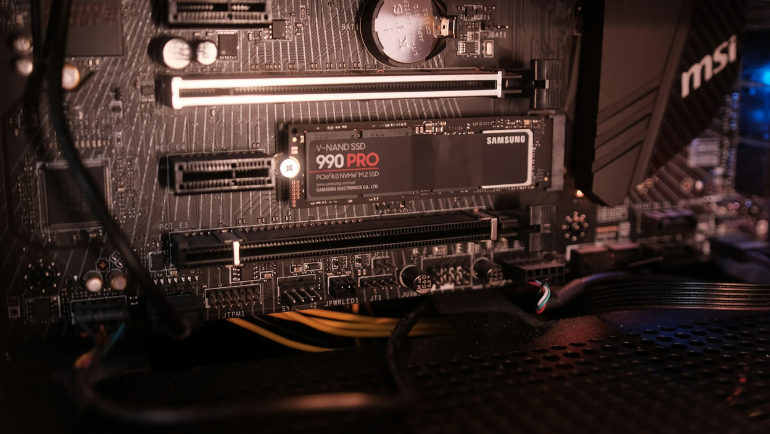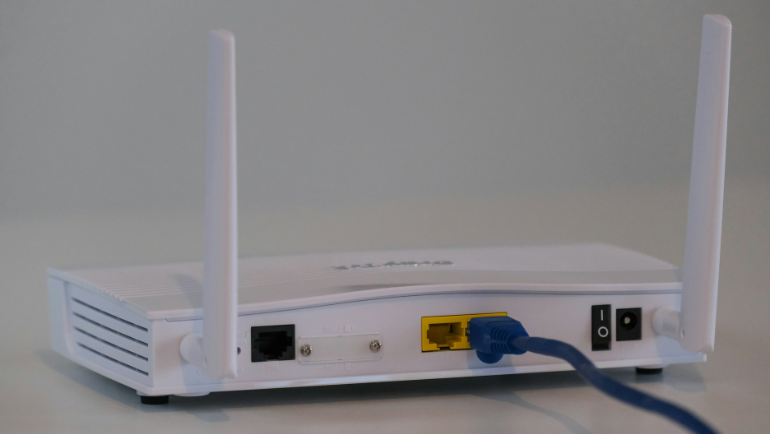
- Release Date
- Architecture
- Performance
- Compatibility
- Power Consumption
- Uses
- Feature
- Price
- Pros and Cons
DRAM memories are an important aspect of computer systems in the entire world. DDR4 and DDR5 are two important DRAM memories, following SDRAM specifications to provide faster performance in laptops, PCs, and servers. They offer high-speed short-term memory for your CPU processors to process information faster, decreasing application access and response time. This blog highlights the difference between the DDR4 vs. DDR5 RAMs in detail.
Difference Between DDR4 and DDR5 RAM
SDRAM (Synchronous Dynamic Random Access Memory) has multiple DDR (Double Data Rate) generations: 1st, 2nd, 3rd, 4th and 5th. DDR4 is the 4th generation while DDR5 is from the 5th generation, and has different speeds, architectures, and uses. The following section will briefly highlight some differences between DDR4 and DDR5.
DDR4 vs. DDR5 RAMs: Release Date
DDR4 was announced in January 2014 by Samsung and became mainstream in 2016. In contrast, DDR5 was officially launched by SK Hynix on October 6, 2020, and became mainstream on November 4, 2021.
DDR4 vs. DDR5 RAMs: Architecture
 DDR5 architecture does not differ drastically from DDR4 RAM. Both have the same number of pins (288 in total). However, the DDR5 RAM had a rework of the pin layout, placing the key notch at a different location (more towards the center) than DDR4 RAMs. This makes it impossible to connect DDR4 RAM to DDR5 RAM slots and vice versa.
DDR5 architecture does not differ drastically from DDR4 RAM. Both have the same number of pins (288 in total). However, the DDR5 RAM had a rework of the pin layout, placing the key notch at a different location (more towards the center) than DDR4 RAMs. This makes it impossible to connect DDR4 RAM to DDR5 RAM slots and vice versa.
Power Architecture
The major difference is in the power architecture, instead of managing power from the motherboard, DDR5 has a power management IC (PMIC) on DIMM. This PMIC enables better signal integrity on DIMM (Dual in-line memory module) by controlling the power supply, offering lower power consumption than DDR4.
Channel Architecture
DDR5 DIMMs feature a total of 80 bus bits, with 64 designated for data and 16 reserved for ECC (Error-Correcting Code). It breaks 80 bits into two independent data channels each 40-bit wide, 8 of which are for ECC. In contrast, DDR4 consists of 70 bus bits, comprised of 64 data bits and 8 ECC bits. Unlike DDR5, it does not break total bits into separate independent channels. The two memories have the same channel width. However, DDR5 independent channels increase access time and efficiency.
DDR5 vs. DDR4 RAMs: Performance Differences
 Resource-intensive workloads require high-quality memory RAMs to reduce the CPU and GPU processing requirements. Considering RAM benchmarks and specifications is necessary to get the best deal. The performance comparison between DDR5 vs. DDR4 memory based on bandwidth, transfer rate, and more are as follows.
Resource-intensive workloads require high-quality memory RAMs to reduce the CPU and GPU processing requirements. Considering RAM benchmarks and specifications is necessary to get the best deal. The performance comparison between DDR5 vs. DDR4 memory based on bandwidth, transfer rate, and more are as follows.
| RAM | Bus Clock Speed (MHz) | Data Rate (MT/s) | Transfer Rate (GB/s) | Channel Bandwidth (GB/s) | Latency (CS) |
| DDR4 | 1066 – 1600 | 2133 – 3200 | 17 – 21.3 | 12.8 – 25.60 | 16 |
| DDR5 | 2,000–4,400 | 3200 – 6400 | 38.4 – 51.2 | 38.4 – 57.60 | 32 |
Side Note: It’s important to note that these values are theoretical and subject to changes in real-time application
DDR5 vs. DDR4 RAMs: Compatibility
Understanding the difference in RAM compatibility with system components is important to avoid performance degradation. AMD has announced their top AMD CPU processors are compatible with AM5 chips incompatible with DDR4 RAMs. But on the bright side, Intel’s 12th, 13th, and 14th generation CPUs support both RAMs. Therefore, evaluating your system specs is important for hassle-free PCs and server performance. The motherboard can only support one RAM standard either a DDR5, DDR3, or DDR4 RAM stick. If you’re concerned about future upgradability then the DDR5-supported server motherboard is the best choice.
DDR5 vs. DDR4 RAMs: Memory Size
There is a striking difference between the modular density of DDR4 and DDR5 RAM sticks. DDR4 offers 32 GB per module, while DDR5 raises the theoretical limit to 128 GB per module, 4 times more than DDR4 RAM sticks. It will allow enterprises to perform more resource-intensive tasks like modeling complex neural network models.
DDR5 vs. DDR4 RAMs: Power Consumption
Motherboards manage the power regulation in the DDR4 RAM stick. In contrast, each module or chip in DDR5 RAM sticks has its own PMIC (Power Management Integrated Circuit). This is why DDR5 consumes less power around 1.1 volts during operations as compared to 1.2 volts of DDR4 RAM sticks. It’s important to note that, unlike DDR4, the lower power consumption doesn’t affect the DDR5 running temperature. Therefore, good air or liquid cooling equipment may be required for efficient working.
DDR5 vs. DDR4 RAMs: Thermal Management
DDR4 RAMs have lower heat generation due to lower chip density and processing power, providing efficient thermal management. In contrast, DDR5 generates more heat compared to DDR4 RAM sticks due to heavy processing, and more modular chip density. Therefore, enterprises adopt air or liquid cooling to maintain steady thermal conditions in DDR5 RAMs. Today, newer RAM stick models have heat-sink cases to protect from overheating during overclocking or heavy performance.
DDR5 RAM vs. DDR4 RAMs: Feature Differences
Before choosing DDR4 or DDR5 RAM sticks consider the following features as follows.
- Error Correction Code (ECC): Both RAMs detect and correct single-bit and multi-bit errors, enhancing data integrity and reliability. Both memory generations have on-die ECC on the DRAM chip instead of adjusting it separately.
- Bank Groups: DDR5 has 8 bank groups, while DDR4 has 4, allowing simultaneous column cycles to be completed within a bank group, increasing the processing power.
- Longer Burst Length: DDR4 has 4 burst chop length and 8 burst length, while DDR5 has twice of both: 8 and 16 respectively. A single 16 burst can access 64 Bytes of data, allowing greater memory efficiency.
DDR5 vs. DDR4 RAMs: Uses in Enterprises
Many high-end applications in enterprises require DDR5 RAM sticks. However, many DDR4 RAM sticks perfectly align with SMEs’ requirements.
- Video Editing: DDR5 is better suited for high-end video editing due to faster data transfer rates than DDR4. However, in mid-end video editing tasks, DDR4 RAM sticks are more than sufficient.
- Machine Learning: DDR4 is suitable for mid-end machine learning algorithms, while DDR5 takes the lead in higher-end modeling and application requirements.
- Processing Data: DDR5 allows better data processing as it is compatible with high-end GPUs and CPUs better than DDR4 RAM sticks. It empowers enterprises to perform high-level data processing without bottlenecks.
DDR5 vs. DDR4 RAMs: Price
 The price between DDR4 vs. DDR5 varies depending on memory capacity, form factor, and brands. DDR5 has better performance, chip density, and capacity, making it more expensive than DDR4. Budget-conscious enterprises prefer DDR3 over DDR4 and DDR5 RAM sticks due to their backward compatibility and cost-effectiveness. Computing Worlds offers the best DDR4 and DDR5 system memories for sale at competitive prices. Here are some products for enterprises from the Computing Worlds inventory. Popular DDR4 RAMs for Sale:
The price between DDR4 vs. DDR5 varies depending on memory capacity, form factor, and brands. DDR5 has better performance, chip density, and capacity, making it more expensive than DDR4. Budget-conscious enterprises prefer DDR3 over DDR4 and DDR5 RAM sticks due to their backward compatibility and cost-effectiveness. Computing Worlds offers the best DDR4 and DDR5 system memories for sale at competitive prices. Here are some products for enterprises from the Computing Worlds inventory. Popular DDR4 RAMs for Sale:
Popular DDR5 RAMs for Sale:
You can request a free bulk quote online for the required number of parts.
DDR5 vs. DDR4 RAMs: Future-Proofing
 DDR4 and DDR5 RAM sticks are future-proofed as many CPUs and GPUs support either one or both. However, as the DDR5 standard becomes more mature, DDR4 will soon be replaced. Therefore, in terms of future-proofing, it’s better to equip your enterprise with the latest RAM generation, DDR5. Many GPUs and CPUs may not be compatible with DDR5 or DDR4 RAMs even if your motherboard has the compatible slots. Remembering these considerations is crucial to protect future investments in computer memories.
DDR4 and DDR5 RAM sticks are future-proofed as many CPUs and GPUs support either one or both. However, as the DDR5 standard becomes more mature, DDR4 will soon be replaced. Therefore, in terms of future-proofing, it’s better to equip your enterprise with the latest RAM generation, DDR5. Many GPUs and CPUs may not be compatible with DDR5 or DDR4 RAMs even if your motherboard has the compatible slots. Remembering these considerations is crucial to protect future investments in computer memories.
DDR4 vs. DDR5 RAMs: Pros and Cons
The following section will explore some major advantages and disadvantages to highlight the difference between DDR4 vs. DDR5 RAM sticks.
| Pros | Cons | |
|
DDR4 |
Generates less heat | More expensive than DDR3 |
| Higher data transfer rates than DDR3 | No backward compatibility | |
| Offers better performance due to thermal management | Rapid changes in technology may arise | |
|
DDR5 |
Better Power Efficiency | Requires cooling solution for proper working |
| Increase Speed | Expensive | |
| Increase Modular Density | Limited Availability |
Frequently Ask Questions
Which Has More Memory Chips DDR4 or DDR5?
DDR4 has more low-density memory chips than DDR5. You can notice that DDR4 RAM has fewer memory chips compared to DDR5 memory RAM.
Are DDR4 and DDR5 RAMs Underclockable?
Yes, you can underclock DDR4 and DDR5 RAM sticks for lower power consumption and system stability. Volatile and non-volatile storage devices have changed the landscape of DRAM and NAND memories. Each DRAM memory standard increases the computational power of the enterprise system, allowing better response times. Therefore, consider your requirements before buying between DDR4 and DDR5 RAM sticks. This marks the end of the debate between DDR4 vs. DDR5 RAMs. Stay tuned to Computing Worlds blogs for more information about storage memories.






